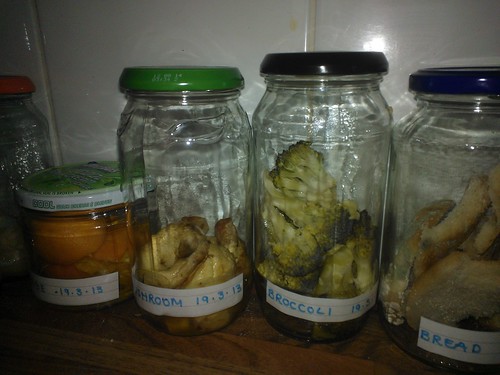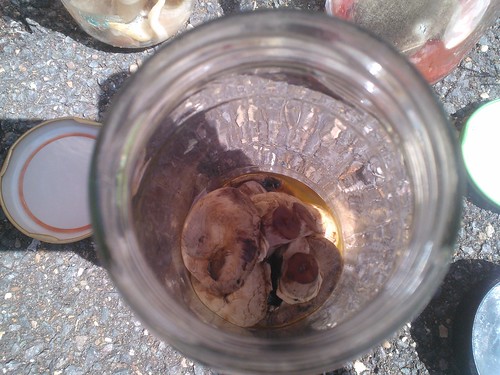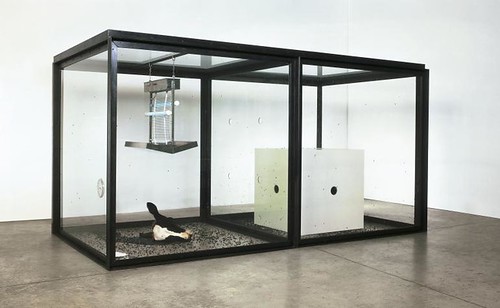The dictionary definition of ‘brave’ is; “having or displaying courage, resolution, or daring; not cowardly or timid.” (http://dictionary.reference.com/browse/brave?s=t) After completing 2 performances in the ‘Safe House’ I feel that this sums up my experience perfectly. I have never felt such a sense of achievement or felt such pride in myself, as I did after this performance. It gave me a huge sense of empowerment. The empowerment came from, not only being brave enough to be naked in performance, but also from the audience’s reactions. I managed to control what they did, even in the most vulnerable position. Each reaction was different and unpredictable, which made this a very exciting project. At the start of this long process, none of us knew how our final performance would turn out. Even as the process carried on, we had no idea how an audience would react to our piece, particularly the bedroom and the cupboard performance.
The male voyeurs were the more difficult to be confronted with as the blindfold came off. I did not know how they would react to me.
“Do spectators simply watch? Or are they gazing, or gawking? Are they impartial observers, innocent bystanders or voyeurs?” ((Freshwater, Helen (2009) Theatre and Audience, Hampshire: Palgrave Macmillan p. 2.))
I had no idea where they were looking when I had the blindfold on. Some audience members admitted to me, post-performance, that they were looking at my body. They looked at every single part of me. However, as soon as I took my blindfold off, they couldn’t look anywhere else but my eyes. This in itself gave me a sense of power over them. Using only my eyes, I could control where they looked. Some male voyeurs struggled with eye contact, and admired the pictures on the wall with forced interest. Only half of the male voyeurs that encountered me in the cupboard obeyed the command to get on their knees. The ones that did kneel said they did so because they were scared of what might happen if they didn’t. This is a comment that we did not expect when beginning the performances.
I found looking at the female voyeurs much easier, although I didn’t feel as powerful. I asked them questions in the narrative to which they answered me with a nod or a shake of the head. This was empowering as I controlled their movements and their thoughts for that period of time. However, the narrative was more about bravery and sympathy than power. “There was no unwritten script for the audience to follow, no clear actions to carry out, no roles proffered for adoption; there was simply a provocation.” ((Freshwater, Helen (2009) Theatre and Audience, Hampshire: Palgrave Macmillan p. 63.)) We wanted to provoke a reaction with simply the use of eye contact. No gestures or movement was used. My body and voice were not needed. Eye contact can be a powerful thing, and it worked in achieving our aim…total power reversal!
Referring back to an earlier post concerning the work of Carolee Schneemann, there are certain boundaries and opinions to overcome when incorporating nudity into performance. I took the following quote and referred to the fact that we would need to be careful with how we approached the subject.
“The line is very fine between making this point clear to the audience, and once again being turned into an object by the still powerful male gaze.” ((Sundberg, M (2011) ‘A One-Work-Artist? Carolee Schneemann and the Reception of her Work’, Konsthistorisk Tidskrift, 80, 3, pp. 168-179.))
The point that this is referring to is; Schneemann tries to subvert the idea that woman are simply an image. By comparing this quote and our performance, I believe we were successful. We reversed the concept of the male gaze as soon as the blindfold was taken off. We made the male voyeurs feel awkward and uncomfortable. We did all this by simply using the female gaze to return the males. All this was accomplished while we were tied, gagged and bound in a cupboard on the wall. So, I think our performance can be summed up in 2 words…girl power!





